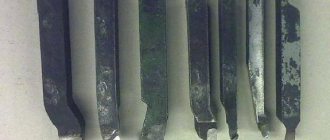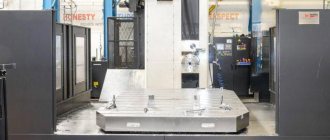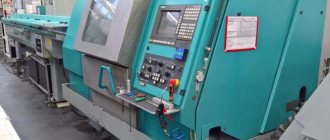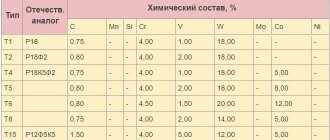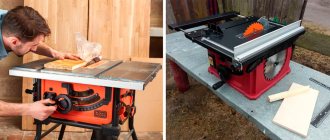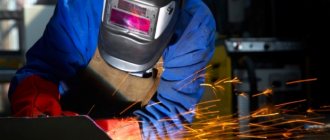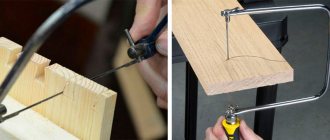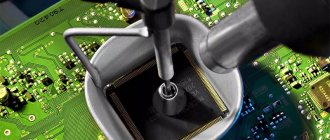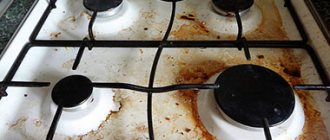Sanding is the last operation before finishing the wood. The final appearance of the finished product depends on its quality. In industrial conditions, the process is performed on stationary equipment, which is not available to home craftsmen. However, modern hand tools make it possible to obtain a smooth surface whose parameters are in no way inferior to the results of processing on professional machines.
There is a large selection of grinding machines of different designs on sale. All of them are capable of performing tasks of varying degrees of complexity and quality. Depending on the technology requirements, models with different methods and quality of wood processing can be used. Let's take a closer look at them.
What are these devices?
Hand grinders are compact and lightweight analogues of industrial designs. All of them process surfaces with an abrasive material - sandpaper. There are different options for using this material, and corresponding tools are made for each of them.
They have different designs designed to perform specific tasks:
- Stripping and stripping
- Grinding
- Polishing
Expert opinion
Kulikov Vladimir Sergeevich
Each of these procedures produces a surface with a certain degree of roughness. In addition, grinding, performed in different ways, allows you to work with planes or curved parts.
To ensure an effective solution to the above problems it is necessary:
- High removal productivity, which is only possible on powerful machines with a large sole area and good dust removal.
- Availability of accessories for the machine (for example: an extension cord or rod) that increase your access options and make it easier to work on high areas of walls and ceilings.
- The presence of a suction mode will provide maximum convenience for ceiling sanding by compensating for the weight of the machine.
- The presence of a triangular or rectangular sole will provide convenience for working in corners and narrow places.
- The presence of a soft spacer (a soft substrate under the abrasive wheel) will provide the ability to work on curved surfaces.
At the moment there are many options for solving these problems. Arsenal Masters specialists reviewed the main solutions and at the same time compared them. Let us emphasize once again that the problem is solved most optimally in the complex:
Types, classification
There are different designs of grinding machines. They are used to process not only wood, but also other materials. Let's take a closer look at them:
Belt sanders (LSM)
The prototype of such structures is the stationary machine ShLPS, the working part of which is a large loop of sanding tape. A hand tool is much more compact, but works on the same principle. It has two drums - drive and tension, on which ready-made loops are installed.
They are commercially available and designed for use on appropriately sized instruments. In addition, it is possible to manually glue loops from rolled sandpaper, which is cheaper and is often used by craftsmen to save money, as well as to obtain the desired result.
A specific feature of LSM is its high productivity and efficiency. If you hold such a tool in place during processing, you can very quickly create a depression. Therefore, working with tape machines requires attention and some skill.
Grinding dust, of which a lot is generated, is collected either in a special dust collector or removed using an industrial vacuum cleaner connected to the corresponding pipe on the back of the tool body.
The main operating mode is manual, but most tools can be installed in special stands. They make it possible to eliminate the formation of irregularities or dents by limiting the feed of the tape to the workpiece in a perpendicular plane. There are also devices like clamps that hold the tool in a stationary position. A blade mounted in such a clamp is made like a stationary machine and allows you to process small parts, holding them in your hands or resting on special stands.
Vibrating (surface grinding) machines
The principle of operation of such a tool is to move a flat sole (or platform), which makes small circular movements. It does not rotate around its axis, moving with the help of an eccentric. The vibration is small (usually about 2 mm), but this is quite enough for processing wooden (or other) surfaces.
A specific feature of vibrating tools is that they are intended only for processing planes. They are capable of working with convex parts, but control over the force and quality of processing in this case will be difficult.
The difference between a surface grinder and a belt grinder is the finer, gentler processing of the material. Creating a recess is much more difficult; for this you need to apply appropriate force. At the same time, the planes are as smooth as possible, without drops or waves. The disadvantage of vibrating machines is that it is difficult to control the quality of processing - if a hard speck gets under the platform, or there is an oversized grain on the surface of the sandpaper, then during grinding marks will appear that spoil the work.
For installation on surface grinders, roll sandpaper is used. It is cut into special blanks according to a pre-created template (they are often supplied with the tool). There are holes on the sole to suck in air along with dust. The corresponding holes have to be made on the sandpaper, otherwise dust removal will become impossible. Ready-to-install replacement elements with pre-drilled holes are also available for sale. There are machines with pre-installed Velcro, for which you purchase the appropriate skins, which do not need to be clamped along the edges of the platform - just press them against the working plane.
Eccentric (orbital)
Eccentric machines have a complex type of rotation - around its own axis and additionally around a center offset relative to it. This type of movement allows you to combine increased productivity with high quality surface treatment. The diameter of the emery wheel is relatively small, so there is some possibility of processing curved or concave parts.
Installation of the skin occurs only with the help of ready-made circles, fixed to the sole with Velcro. There is nothing to replace them with, so you will have to buy ready-made consumables, which is not always convenient. In addition to sanding wheels, there are elastic and polishing wheels that allow you to get an almost perfect surface.
During operation, orbitals generate a large amount of dust. Most models have holes in the sole for collecting it, and a cloth bag or industrial vacuum cleaner can be attached to the back of the body.
Expert opinion
Kulikov Vladimir Sergeevich
Most users prefer this sander design for its versatility, high-quality processing ability and efficiency in all operations.
Petal tools
The design of flap machines differs from all others in the shape of the working body. They are served by a petal drum, in which the sandpaper is installed in the form of separate petals located in the radial direction.
It is difficult to work with planes with such a tool, but it is best suited for stripping or roughly roughing surfaces. For work, a ready-made abrasive drum is required, which is replaced as it wears out. The service life depends on the intensity of use, but usually it is quite long.
Other types of grinding tools
In addition to the above-mentioned wood sanding machines, the following can be used:
- Angle grinder (angle grinder)
- Renovator tool
- Grinding attachment for electric drill
1-Angle grinder (angle grinder) 2-Renovator tool 3-Attachment for grinding on an electric drill
The use of angle grinders is limited to primary rough processing. Sanding discs allow you to quickly and effectively remove uneven surfaces, remove old paintwork and other procedures.
Renovator is a relatively new tool. They work on the vibration principle, have a universal effect and can perform various operations. Convenient for sanding small areas where precision and accuracy are important. Allows you to process internal corners, which is impossible on orbital machines.
Drill grinding attachments are used to perform simple work that does not require high precision. However, experienced craftsmen are able to obtain quite high-quality results using this method. Having the skills and experience allows you to perform most practical tasks if there is no more suitable tool at hand.
Types of grinders
Despite the fact that these mechanisms are used for the same task, several types of structures can be distinguished, which differ greatly in their operating principle.
- a tape machine is an ideal choice for fast and high-quality processing of a large area (for example, floor surfaces, walls). The belt is fixed on guide rollers and moves at high speed (tracked vehicles work according to the same scheme);
The main components of the draw machine
Note! During operation, a lot of dust is generated, so manufacturers have improved the design of the device so that the dust is concentrated in a special bag or collected with a vacuum cleaner.
- eccentric sander - stands out from the rest in that the working surface moves both due to rotation and due to the operation of the eccentric mechanism. Its main advantage is that the output surface is perfectly smooth (when using a tape machine, small marks may remain on the wood);
Main components of an eccentric grinder
Note! It is the eccentric type that is suitable for processing not only flat, but also curved surfaces (both convex and concave).
- vibration mechanisms - in such mechanisms the working surface performs high-frequency vibrations with a small amplitude in the horizontal plane. For this purpose, the rotation of the eccentric is used. There are no restrictions on use; they have a fairly high productivity, so that they can be used both for floors and for finishing sanding of small products;
- Vibrating machines with a triangular-shaped working surface (ideal for processing corners in a room) are often classified as a separate type. The principle of operation is the same as that of a conventional wood sander, and the main differences are in the shape of the sole;
Features, specifics of use
The main feature of hand-held wood sanders is their dependence on the type of abrasive. It is impossible to obtain a high quality surface using coarse sandpaper. The tool itself only creates the necessary conditions for the movement of the sandpaper, but it is the sandpaper that does the work. This property allows you to obtain high quality processing by consistently using material of different grain sizes - from coarse to the finest. The result is a smooth surface, which, if desired, can be brought to perfection.
Expert opinion
Kulikov Vladimir Sergeevich
Working with the tool requires some skill, attention and accuracy. It does not pose a serious danger, but a large amount of grinding dust requires effective removal. In addition, ventilation (at a minimum, airing) of the room where work is being carried out is necessary. The master himself must use a respirator and safety glasses.
Wood sanders have their own characteristics, as well as pros and cons.
Advantages and disadvantages
The advantages of grinders include:
- High speed, processing efficiency.
- Creating a high-quality, smooth surface.
- Versatility, ability to perform several types of processing.
- The ability to work not only with wood, but also with other materials.
- Simplicity and relative safety of working with the tool.
The disadvantages of the machines should be considered:
- The need to connect to the power supply network.
- Dependence on the availability and quality of sandpaper (tape, circles, etc.).
- A large amount of dust generated during operation.
- The need for maintenance, cleaning and proper care.
Expert opinion
Kulikov Vladimir Sergeevich
Despite some shortcomings, users highly rate all types of grinding tools. The high demand for it clearly shows the demand and necessity of machines for specialists and home craftsmen.
General recommendations for selection
The market is flooded with offers from little-known companies; in appearance, such models may not differ much from high-quality devices, but the difference will become noticeable only after some time. The price of such mechanisms may look attractive, but the savings will cost dearly in the future. So you need to know what to look for when choosing such mechanisms.
It is more convenient to give recommendations for choosing a specific model depending on its type, but you can also give some general advice.
In the store it is worth checking out:
- sander weight. It’s good if you don’t need to keep it suspended for a long time, in which case the weight of the machine can even be considered an advantage. But if you have to hold it in your hands, then preference should be given to a higher speed of movement of the working surface;
- its behavior when turned on. It is clear that a wood sander is not a quiet tool, but some models simply set a record, stunning their owners. Also, at idle, it is worth assessing the vibration; if the machine “hits” hard, then there is a high probability of its rapid failure;
- cost – it is quite possible to choose the optimal price/quality ratio without high expenses. The same Interskol produces a fairly reliable tool;
- the possibility of quick repairs also plays an important role, so exotics from this point of view are not the best choice; spare parts for not very common brands of mechanisms are difficult to find;
- The dimensions of the slab, mini-slab (about 100 mm 2) are suitable only for processing small wooden products.
Slab dimensions can vary greatly
Some craftsmen make something like grinders on their own. But a homemade machine is not able to compete with professional ones in terms of surface quality. The maximum that such a handicraft mechanism can be used for is processing small wooden parts.
How to choose the right one?
First of all, you need to decide how necessary the tool is. If the machine is used very rarely, you will have to periodically renew the lubricant and check the general condition. The type of construction is chosen based on the specifics and nature of the proposed work. Cleaning and roughing require powerful tools, and more precise ones to obtain clean, high-quality surfaces.
In addition, you need to decide on the technical characteristics of the tool. For large volumes of work, more powerful samples will be needed, and for clean and accurate procedures, appropriate models are needed. When purchasing, it is recommended to check with the seller the operating parameters of the tool, find out how accessible the consumables are (loops or circles for this machine), how often the brushes on the motor will have to be changed and the tool serviced. This information will help you choose the most suitable option.
Let's sum it up
Would you like to have a wood sander at home?
Of course! Not useful
Sanders are used to prepare wood for finishing. In some cases, they are also used for sanding and polishing paintwork. There are many types and design options for grinding tools.
The most popular include:
- Tape
- Surface grinding
- Eccentric machines
The grinding process is accompanied by a significant release of dust, so you must use protective equipment. The abrasive should be changed only after the machine has stopped completely. Before starting work, you must carefully study the user manual and comply with all manufacturer’s requirements. This will increase the service life of the tool and get the highest quality results.
Makita 9741
at a price of RUB 25,310.
The low bristle brush included in the basic configuration of the Makita 9741 model shows good results when processing lumber from different types of wood, not only because of the special polymer bristles. Thanks to an acceptable combination of power and the tool’s own weight, quality will be present when working with each (appropriate for purpose) consumable.
- Simple design
- belt drive,
- low center of gravity,
- durable and comfortable handles
The tools do not leave even professional carpenters indifferent.
After all, comparing the predisposition of the 9741 model to intensive use, and the small volumes of materials that need texture cleaning (even in workshops), we can confidently speak about a fairly long service life of the brush grinding tool. Main technical characteristics of Makita 9741
| Characteristics | Values |
| Brush dimensions (D-diameter, L-length), mm | D-100, L-120 |
| Brush rotation speed rpm min | 3500 |
| Power, W | 860 |
| Model options |
|
| Additional equipment | Hex keys. Connection pipe for vacuum cleaner. Sanding brush with nylon bristles. |
| Weight, kg | 4.2 |
| Development/production | Japan / Japan, USA, Germany, China |
| Cost, rub. | 25310 |
Watch a short video review of the features and configuration of the Makita 9741 model:


